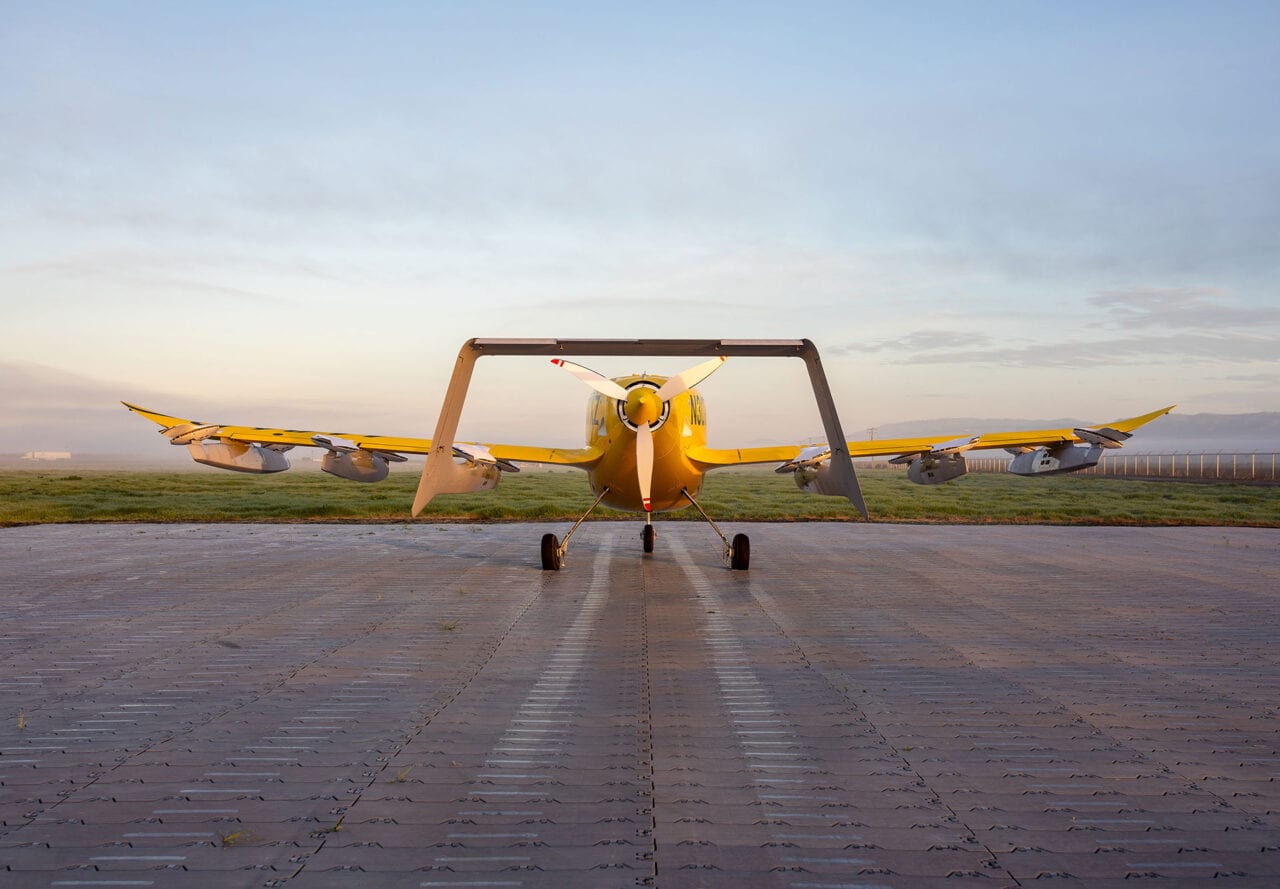
Wisk Aero is working on a certification path for its self-flying all-electric air taxi Cora, pictured here. Tom Gunnarson, lead of regulatory affairs at Wisk, was part of a Vertical Flight Society session on Wednesday Jan. 27, discussing the need for more regulatory standards for a more streamlined certification process of eVTOL aircraft.
There is currently a lack of consistency in regulatory standards for electric vertical take-off and landing (eVTOL) aircraft, industry professionals said during Jan. 27 panel hosted by the Vertical Flight Society’s 2021 Autonomous VTOL Technical Meeting and Electric VTOL Symposium. While these standards are further developed, the industry and regulators will have to tackle issues like finding consensus standards, protecting proprietary information, and regulating new technology like automation.
There are a number of gaps in current standards that have forced applicants to flood regulatory bodies with proposals on means of compliance to special conditions or rules and they each have to be evaluated independently, William Schinstock, strategic policy manager for small airplanes at the Federal Aviation Administration (FAA), said during the panel.
“You lack consistency across the projects, there’s a lot of duplication, it’s very time consuming, and it’s a poor use of resources, both for the applicants and for the FAA repeating a lot of work,” Schinstock said. “I think that if we can reach a point where we have a consistent comprehensive set of standards for eVTOL everybody will benefit.”
This does not only ease the burden on regulatory bodies like the FAA but it is also harder to go to the FAA as one applicant as opposed to having a consensus standard that the whole industry can agree on, Tom Gunnarson, lead of regulatory affairs at Wisk, said.
“It’s much more difficult as an applicant to go to an authority like FAA on your own, and convince them that what you’re proposing is a good idea because one of the things that we hear very often from FAA is what they’d really like to hear from is the whole industry,” Gunnarson said.
However, some things will not be able to be standardized because they are proprietary or are unique to configuration or platform, Gunnarson said.
“With eVTOL, with sort of massively distributed propulsion systems where the propulsors are intimately involved in the flight controls of those aircraft as well, that’s one aspect where there’s going to probably be quite a lot of private intellectual property in terms of how those functions are intermingling in the hardware and software that will remain private,” Ed Lovelace, CTO at Ampaire, said.
Another area that could have difficulty with consensus standards and is essential for eVTOLs is batteries, Mark DeAngelo, aerospace engineer at SAE International, said.
“There are lots of solutions to creating an energy source and then how it’s distributed,” DeAngelo said. “So that is one of those cases where it’s really hard to standardize at this point.”
This gets even more complex when factoring in some hybrid designs, Schinstock said. However, this does not mean that there is no case for standardization in this area.
“I think there’s some common ground between all of them that we can find for the standards and then build on that for the unique parts of the designs,” Schinstock said.
While eVTOLs themselves are a new technology they also include other innovative technologies like autonomy that regulatory bodies are unsure of how to regulate. Schinstock said autonomy will be a critical design factor in eVTOL aircraft because of its ability to open up eVTOL to a broader audience.
“If we can simplify the operation of the vehicle and do that reliably, there’s a lot of benefit in that,” Schinstock said. “I think it will help aviation, in general, because it may reduce the amount of fear people have of becoming a pilot.”
However, creating standards for this technology will be uncharted waters. Christine DeJong, director of global innovation policy at GAMA, said regulators should focus on creating standards for autonomy that can be used in any system so that they are not dependent on each other.
“You can break down the content into really focused areas and then…the standards can be kind of built up as a toolbox but they’re not completely dependent upon each other but they definitely are going to rely on each other in a lot of ways,” DeJong said.
There are also still many questions about the process of creating standards.
“I think actually the standards bodies are beneficial in writing these new means of compliance,” FAA’s Schinstock said. “In the past what we would do in the FAA is we’d write a special condition for one applicant, and we’d have a few people from the company and a few people from the FAA sit down and draft the requirements…I think that the industry standards and the international aspects of that where you get a large group of people to sit down and look at it sometimes it takes longer, but I think you end up with a better product.”
Some technologies that will be involved in eVTOL aircraft are not yet ready for standardization, Anna Dietrich, co-founder and director of industry and strategy at Community Air Mobility Initiative (CAMI), said.
“Sometimes there’s a level of maturity that needs to be reached before you can standardize,” Dietrich said. “One topic that we haven’t seen much standardization on yet is really around the discussion of charging. So we may see that down the line but right now that isn’t quite ready yet.”